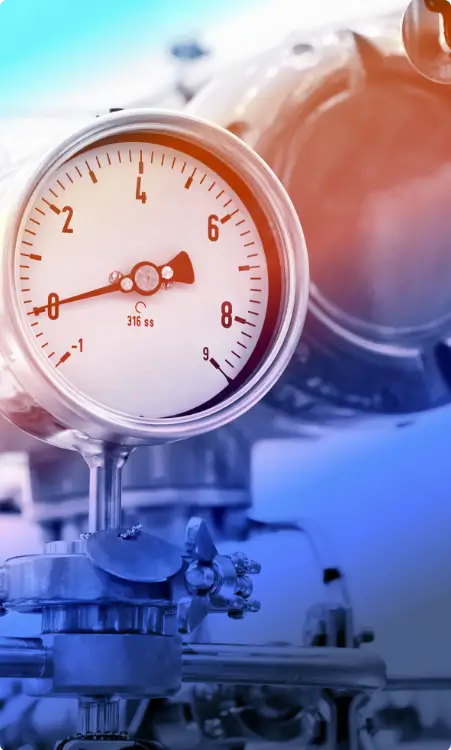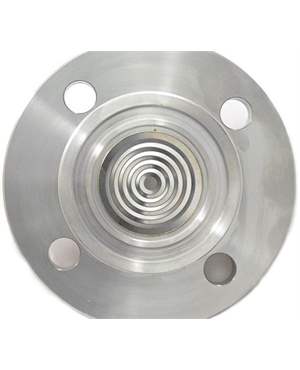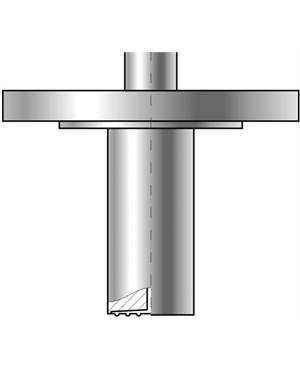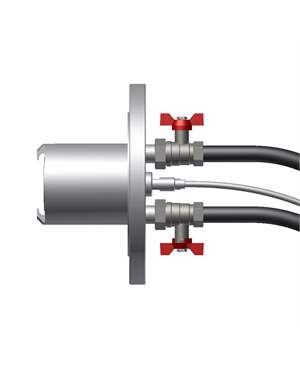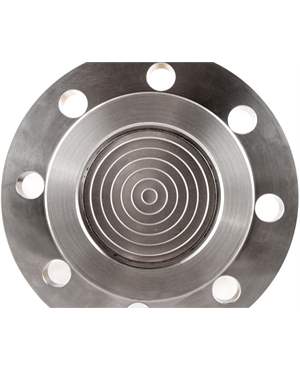- Transmitters
- Control Valves
- Transducer
- Controllers / Positioners
- Gauges
- Sensors
- Thermocouples and Thermocouple Assemblies
- Level switches
- RTDs-Resistance Temperature Detectors
- Instrument Manifold
- Accessories
- Wire Products
- Wireless Products
- Detectors
- Miscellaneous products
- Alarms and signaling devices
- Gas Detectors
- Gas Monitoring Systems
- Flame Detectors
- Hart communication tool
- Hydrostatic level probes
- Displays / Digital indicators
- Thermowells
- Thermometers
- Power supplies, Isolators, Signal converter
- Automotive Equipment
- Signal generators
- Data-loggers, Recorders
- Humidity and Temperature Transducer
QUICK ENQUIRY
Flanged Diaphragm Seal
Flanged diaphragm seals are precision-engineered components used to isolate pressure-sensing instruments such as transmitters, gauges, and switches from harsh or corrosive process media. These seals play a vital role in ensuring the accuracy and longevity of sensitive instruments, especially in aggressive industrial environments. By acting as a barrier between the process fluid and the pressure sensor, diaphragm seals help prevent damage caused by high temperatures, corrosive chemicals, or particulate-laden fluids.
At The Transmitter Shop (TTS), we provide a wide range of high-performing flanged diaphragm seals tailored to meet various industry demands. Our products are known for their durability, accuracy, and reliable operation in challenging process conditions.
Filter By
How Flanged Diaphragm Seals Work?
Flanged diaphragm seals operate on a simple yet highly effective principle. Their primary function is to isolate the pressure measuring device, such as a transmitter, from direct contact with the process fluid. This isolation is crucial in preventing contamination, corrosion, and clogging of the instrument, especially when dealing with viscous, crystallizing, or highly reactive fluids.
The core component of a flanged diaphragm seal is the diaphragm, a flexible, chemically resistant membrane usually made from stainless steel or exotic alloys. The diaphragm is welded or tightly clamped between the flange and the body of the seal, ensuring a leak-proof boundary. The space between the diaphragm and the sensing element is filled with a specially selected fill fluid, such as silicone oil or glycerin, which transmits pressure changes from the process side to the transmitter.
When process pressure is applied, the diaphragm flexes proportionally, transmitting the pressure through the incompressible fill fluid to the pressure sensor. This ensures accurate measurement without exposing the sensor to harmful conditions. The flange connection allows for easy integration with process piping, creating a secure and maintenance-friendly solution. This design significantly enhances the operational life of pressure instruments and maintains measurement integrity even in extreme process environments.
Types of Flanged Diaphragm Seals Available at The Transmitter Shop
At TTS, we understand that each application demands a specific diaphragm seal configuration. Thus, we offer a comprehensive lineup of flanged diaphragm seals that cater to diverse process requirements. Whether you need enhanced sensitivity, resistance to chemical corrosion, or ease of maintenance, our range has you covered.
- Flanged Seals with Flush Diaphragm (S-P): These seals are designed for general-purpose industrial applications where standard process fluids are involved. The flush diaphragm design ensures direct pressure transfer and minimal dead space, reducing the risk of clogging. Made with high-quality materials, these seals are cost-effective and suitable for most low to medium-risk environments. They are widely used in water treatment, HVAC systems, and general process industries.
- Flanged Seals with Extended Diaphragm (S-T): These seals are ideal for applications that require heightened sensitivity and faster response times. The extended diaphragm design brings the diaphragm closer to the process fluid, minimizing lag in pressure transmission. They are particularly useful in applications involving low-pressure ranges or where quicker reaction is critical. The design also helps reduce the thermal gradient between the process and instrument.
- Flanged Seals with Extended Diaphragm and Cleaning System (S-TK-P): These advanced diaphragm seals are tailored for industries where cleanliness and maintenance are a priority. The integrated cleaning system allows for in-place flushing of the diaphragm without disassembly, saving valuable downtime. The extended diaphragm enhances performance in sensitive environments, while the design simplifies compliance with sanitary regulations. These flanged diaphragm seals are ideal for food, pharmaceutical, and biotech industries.
- Chemical Flanged Seals with Flush Diaphragm (S-Ch): Built for harsh chemical processing environments, these seals use corrosion-resistant materials like PTFE. The flush diaphragm prevents build-up of aggressive media and ensures accurate, long-term measurement. Their rugged construction makes them perfect for acids, alkalis, solvents, and other chemically aggressive substances. They are a staple in chemical plants, refineries, and specialty processing.
Features and Benefits of Using Flanged Diaphragm Seals
Our flanged diaphragm seals are engineered to deliver exceptional performance and operational reliability in diverse industrial settings. From safeguarding your instruments to improving measurement accuracy, they offer a host of benefits that make them a smart investment.
- Enhanced Instrument Protection: These seals create a robust barrier between the instrument and the process media, preventing direct exposure to extreme temperatures, corrosive chemicals, or abrasive particles. This protection increases instrument life and minimizes maintenance frequency.
- Accurate and Reliable Pressure Transmission: Thanks to high-quality fill fluid and precision-engineered diaphragms, pressure is accurately transmitted to the sensing element. This consistency ensures reliable data collection, which is crucial for process control and compliance.
- Easy Maintenance and Cleaning Options: Many diaphragm seal models are designed with sanitary and CIP (Clean-in-Place) features, making them ideal for industries such as food, beverage and pharmaceuticals. These designs reduce process downtime by enabling efficient cleaning and inspection without disassembling the entire setup.
- Customizable for Specific Applications: Our diaphragm seals can be tailored to meet unique process conditions. Whether it's a specific fill fluid, diaphragm material, or flange type, TTS can provide customized solutions that meet your exact needs.
- Improved Safety and Leak Prevention: Diaphragm seals eliminate leak paths that could otherwise lead to hazardous spills or contamination by preventing direct media contact with pressure instruments. This makes them ideal for high-risk or regulated environments where safety and cleanliness are paramount.
Applications of Flanged Diaphragm Seals
Flanged diaphragm seals find utility across a broad spectrum of industries where process safety, instrument longevity, and measurement accuracy are top priorities. Here are a few common applications:
- Chemical and Petrochemical Processing: These industries demand robust protection from highly corrosive and reactive media. Diaphragm seals protect pressure instruments from aggressive chemicals, ensuring safe and accurate pressure monitoring in reactors, pipelines, and storage tanks.
- Pharmaceutical and Food Industries: In sanitary applications, seals with cleaning systems and smooth flush diaphragms are critical. They prevent bacterial contamination and allow for compliance with stringent hygiene standards, making them ideal for clean-in-place (CIP) processes.
- Oil and Gas Industry: In upstream and downstream operations, diaphragm seals help maintain accurate pressure readings despite the presence of abrasive slurries, hydrocarbons, or high temperatures. Their reliability supports safe operation in pipelines and offshore platforms.
- Water and Wastewater Treatment: Diaphragm seals protect instruments from solids, sludge, and corrosive disinfectants commonly found in municipal and industrial water systems. Their use ensures accurate flow and level control without frequent instrument replacement.
- Pulp and Paper Industry: In environments containing fibers and harsh chemicals, diaphragm seals offer essential isolation and protection. They prevent clogging and fouling while ensuring continuous and precise pressure measurement in pulp digesters and chemical tanks.
How to Choose the Right Flanged Diaphragm Seal for Your Industry
Selecting the right flanged diaphragm seal involves understanding your process needs, media compatibility, and installation environment. At The Transmitter Shop, our experts help customers identify the ideal solution based on several critical factors.
- Identify the Process Media Characteristics: Determine whether the fluid is corrosive, viscous, or contains solids. This will guide the choice of diaphragm material and fill fluid to ensure chemical compatibility and long-term performance.
- Consider Pressure and Temperature Ranges: Different diaphragm seals are rated for specific pressure and temperature limits. Match these parameters with your application to ensure the seal performs accurately without compromising durability or safety.
- Choose the Appropriate Flange Standard and Size: Verify compatibility with your process connections. We offer flanged diaphragm seals in various sizes and ratings to match your system specifications seamlessly.
- Assess Measurement Sensitivity Needs: If your application involves low-pressure ranges or demands a quick response, opt for extended diaphragm models like the S-T series. These provide improved sensitivity and faster pressure signal transmission.
- Understand Fill Fluid Properties: Fill fluids must be chosen based on temperature extremes, potential for contamination, and system response time. Options include silicone oil, glycerin, or other industry-specific fluids.
- Consider Ambient Conditions: External environmental factors such as humidity, vibration, or extreme temperatures can affect performance. When necessary, choose seals designed for harsh environments when necessary.
Looking for dependable pressure isolation in harsh process environments? The Transmitter Shop offers a trusted selection of flanged diaphragm seals designed for accuracy, durability, and long-term performance. Whether you need protection from corrosive media or want to ensure precise pressure readings, we have the right solution for your application. Contact our sales team today for personalized assistance and find the perfect flanged diaphragm seal for your industry needs.
Frequently Asked Questions (FAQ):
When should I use a flanged diaphragm seal instead of a threaded or sanitary type?
Ans: Use a flanged diaphragm seal when:
- Your process connection is a standard flange (e.g., ANSI 150#, 300#)
- You’re dealing with high temperatures or pressures
- You require robust sealing in aggressive or hazardous process conditions
- You need greater mechanical stability in industrial environments
2. What materials are flanged diaphragm seals made from?
Ans: The wetted diaphragm and flange can be made from materials such as:
- 316L Stainless Steel (standard)
- Hastelloy C, Monel, Inconel, Tantalum, Zirconium
- PTFE-lined or coated for corrosive media
- The selection depends on the chemical compatibility with the process fluid.
3. How is the fill fluid selected for a flanged diaphragm seal system?
Ans: The fill fluid must suit the process conditions (temperature, pressure, and media). Common options:
- Silicone oil – general purpose
- Glycerin-water – food and sanitary applications
- Halocarbon oil – oxygen service or extreme temperatures
- Inert synthetic fluids – high temperature or specialty chemicals
4. How do I ensure proper installation of a flanged diaphragm seal?
Ans:
- Match the flange size and pressure class exactly with the process connection
- Use appropriate gaskets and torque values for flange bolts
- Ensure alignment and avoid over-tightening, which can damage the diaphragm
- Avoid thermal or mechanical shock during startup
5. Are flanged diaphragm seals available in remote seal configurations?
Ans: Yes. Flanged diaphragm seals can be supplied with capillary tubing to connect to pressure transmitters mounted remotely. This setup is ideal when:
- The process is too hot for direct mounting
- Vibration is a concern
The transmitter needs to be mounted away from the process.

.webp)
